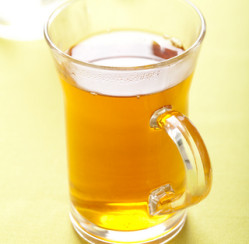Table of Contents
- What is Rooibos?
- How do you say Rooibos?
- Types of Rooibos for brewing
- What should good quality Rooibos look like?
- Health Benefits of Rooibos
- Conclusion
What is Rooibos?
African rooibos is a plant that grows in a small portion in the province of Cape Town, South Africa. The scientific name for rooibos is asphalatus linearis. Its leaves are used to make the rooibos tisane, or rooibos tea. It is also known as the red bush tea, red tea, red rooibos, or simply rooibos. The resulting tea leaves and beverage is slightly brown to reddish in color and has a mild sweet, somewhat fruity taste.
How do you say Rooibos?
I know the first thing that you are probably wondering to yourself is if you are pronouncing it correctly. I will not lie, I have been saying apparently wrong for the past year and a bit… the way how to say rooibos is ROY BUS.
Types of Rooibos for brewing
green rooibos is also available, but is less common and more expensive than red rooibos. Green rooibos does not undergo the fermentation process, unlike the red rooibos variety.
Rooibos was considered to be a plant that grows in the wild, hence, considered as a wild tea. But since the 19th century, rooibos has been cultivated and grown in plantations in South Africa due to its potential profit. Attempts of cultivating rooibos in other countries have failed. This plant is seemingly specific to the climate and soil conditions of South Africa.
The African Rooibos tisane is a very popular beverage, especially in South Africa where its various uses has been discovered. It is very rich in antioxidants, low in tannins, and lacks caffeine. Today, rooibos is becoming popular around the world, especially in the Western Countries, and most especially to health-conscious consumers.
What should good quality Rooibos look like?
High quality rooibos leaves should be whole, long, and needle-like in shape. They produce a richer and darker taste whereas short, crumpled leaves produce a slightly dusty taste. Loose leaves produce a richer and higher quality but teabags are more convenient to use. Flavored and plain rooibos are available in the market. Some are infused with other herbs and fruits. It can be enjoyed hot or cold, with or without milk. It can be plain, or sweetened with sugar or honey. Rooibos contains no additive and colorants. Its red color is primarily due to the fermentation process this plant undergoes.
Rooibos has been a big part of the South African culture. Today, rooibos is becoming famous around the world due to its unique taste and health benefits. Rooibos truly deserves the praise of its lovers and is worth the try for those who have not yet experienced the wonder of the African Rooibos.
Health Benefits of Rooibos
If you have ever wondered what the rooibos health benefits were then hopefully this section will help to answer your question.
As mentioned above the really cool thing about rooibos is that it does not have caffeine in it at all. I guess you could say that there is no real relationship between rooibos and caffeine which is a great thing as it really allows you to enjoy rooibos whenever you feel like it. This will protect you from those late night when you cannot sleep.
Another amazing thing that is somewhat coupled with the lack of caffeine is that rooibos can be consumed by expecting mothers. This is one of the main reasons that rooibos and pregnancy often find themselves intertwined. With the rise of tea appreciation it often comes to a surprise that pregnant women generally should cut down when they become expecting mothers. This is when you can turn to rooibos when you are pregnant, and even continue after pregnancy has wrapped up for those stressful ( and happy ) times to come.
Conclusion
Hopefully the above listed info has provided a bit of information about rooibos, some of the benefits, where it is grown, as well as rooibos and pregnancy. Here are some great blends if you are looking to take the plunge into a new addition to your brewed cabinet, or if you are just looking for some new great rooibos:
